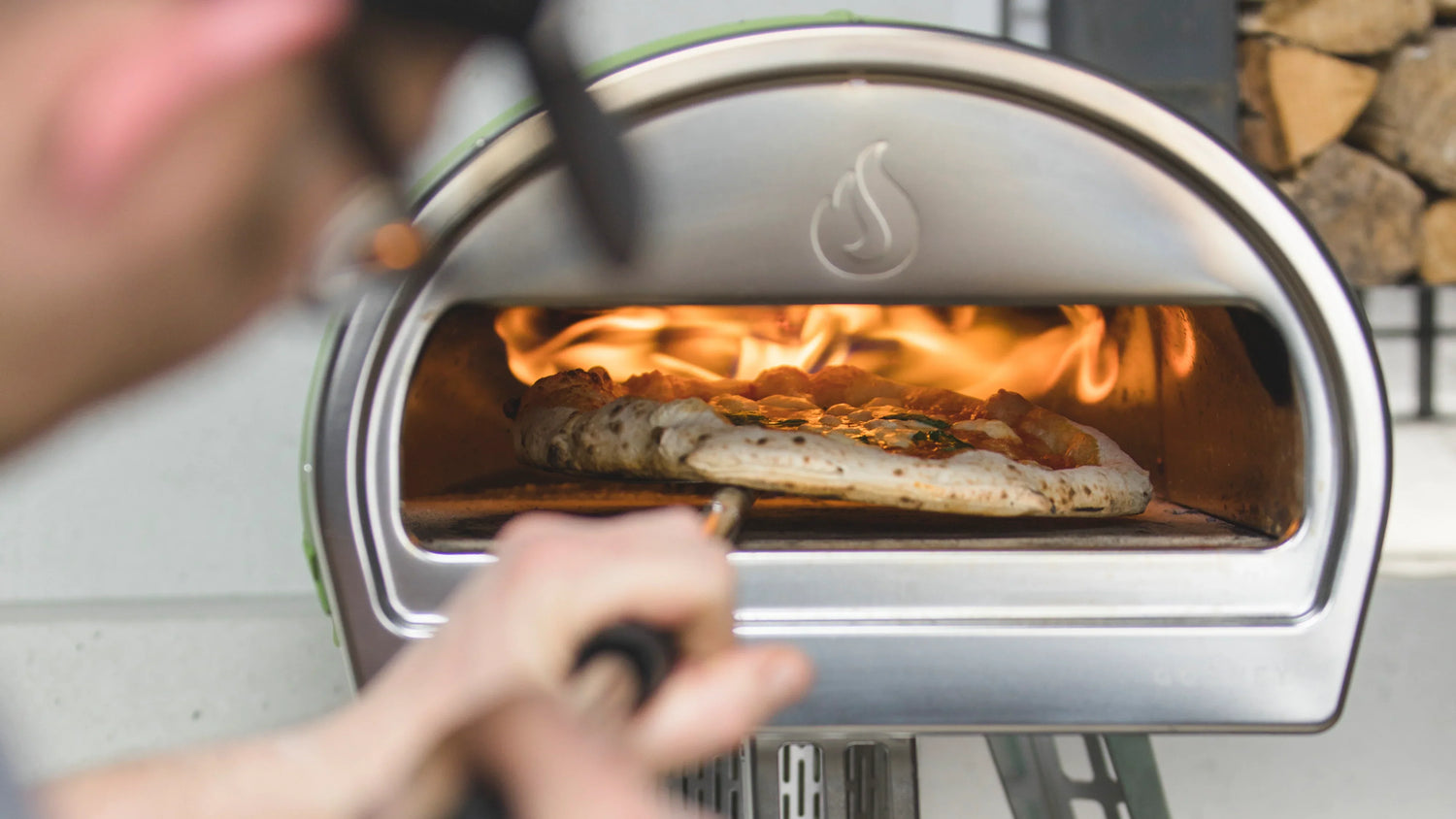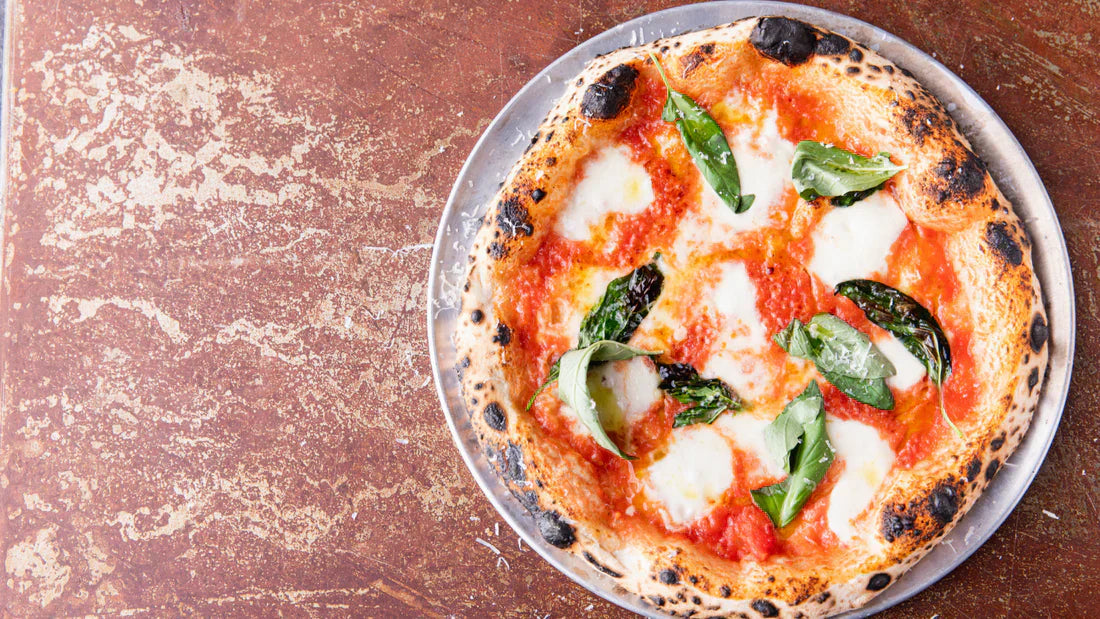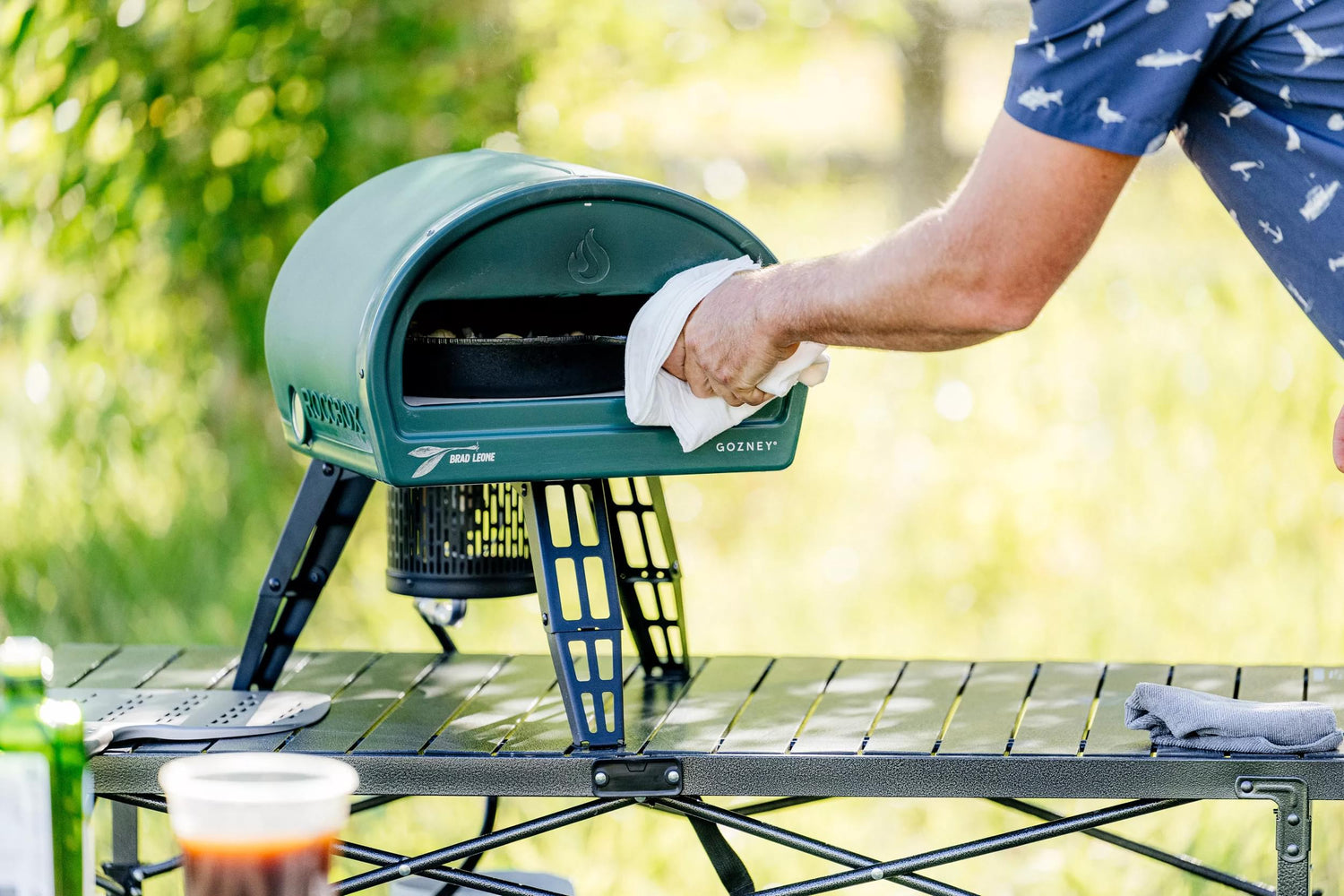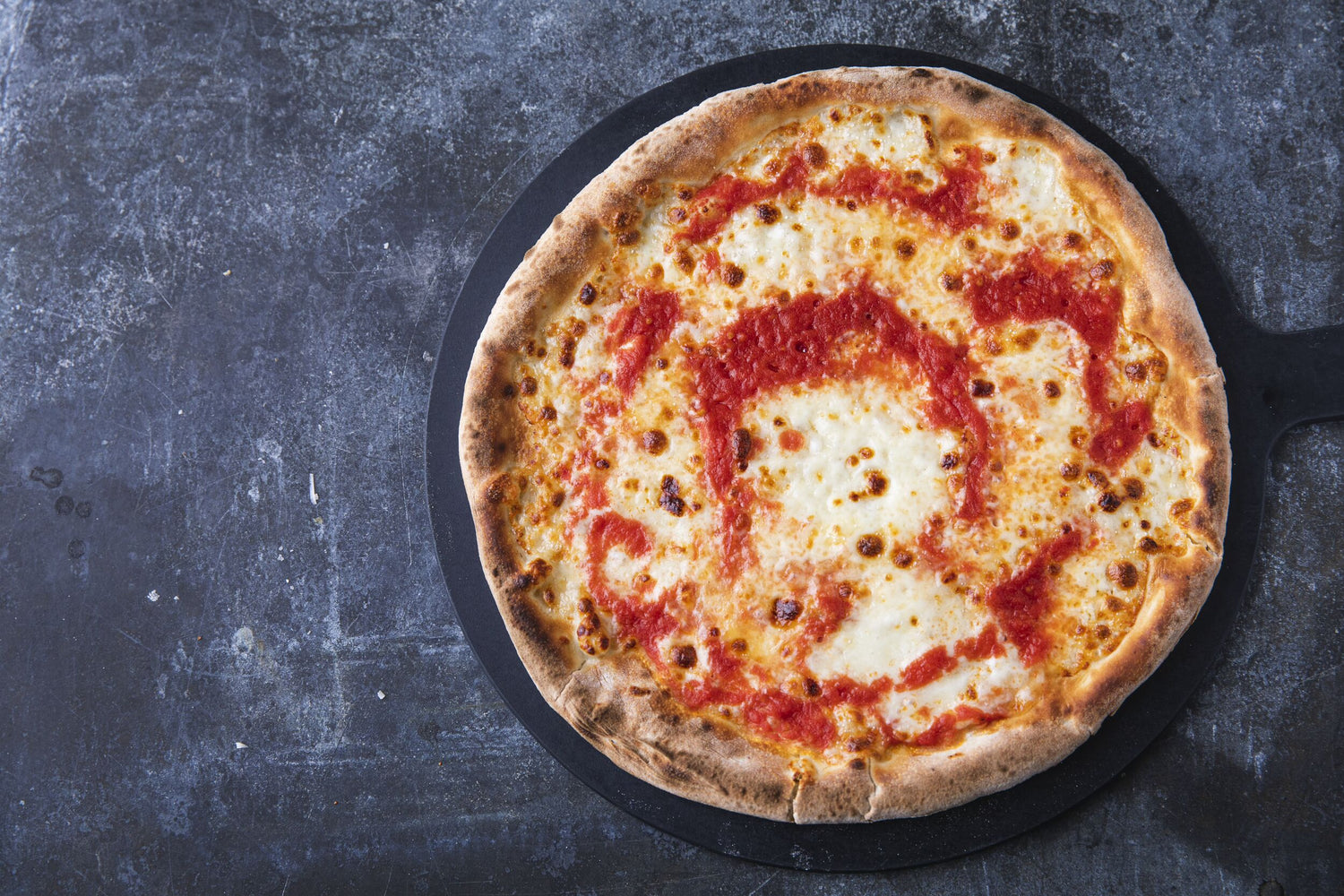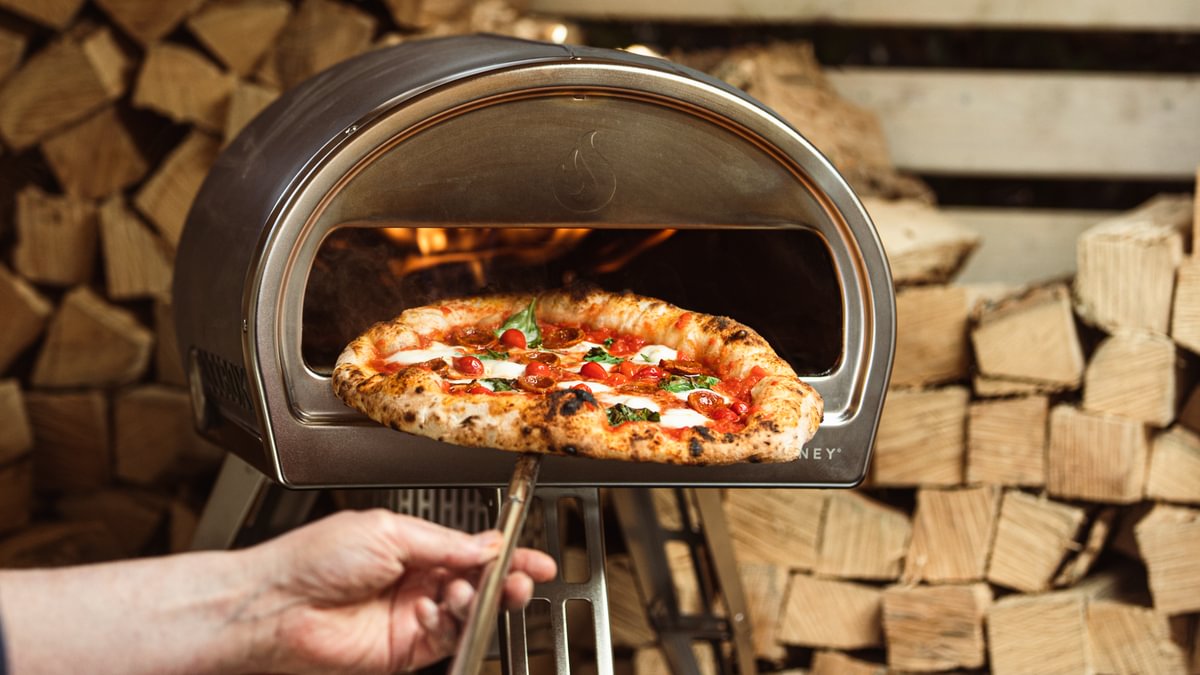Pizza dough without yeast is like strawberry without cream or the sky without stars. Yeast is what gives your pizza its puff. Without it, your pizza dough would be dense and hard
Looking for a great pizza dough recipe? Checkout our Simple pizza dough recipe. With a few simple ingredients and easy to follow steps, you'll be balling like the best of them!
How does yeast work?
Yeast works by breaking down (or fermenting) the natural sugars in your dough. As it ferments these sugars, it releases little bubbles of carbon dioxide into the dough. This happens when your dough is proofing (learn everything about how to proof your pizza dough). Along with the alcohols and acids that are released by fermentation, these bubbles are what puff the dough up and give your pizza that authentic and delicious, bready flavour.
As soon as the pizza dough hits your Gozney pizza oven stone, the oven’s heat starts to kill the yeast. The air bubbles expand in the heat, and your pizza puffs up — like magic.
Which yeast is best for pizza?
There are four commonly used types of yeast. All of them make great pizza dough, but the best one for you will depend on your exact needs. We've done the research to help you choose the best yeast for you.
Instant Active Yeast - Most Convenient
Instant yeast is not much different from active dry yeast. The main difference is that instant yeast has certain additives that make it more reactive. This means that it doesn’t have to be mixed with water to be activated. You can usually sprinkle instant yeast straight onto your dough mixture!

Because it doesn’t need to be activated first, instant yeast is also less susceptible to being affected by extra salt and sugar in the dough.
Active Dried Yeast - Most Common
Active dry yeast is the most commonly used type of yeast for making baked goods. It is yeast that has been dried out so that it has a longer shelf-life. As with all dehydrated food, you just need to add some warm water to bring it back to life, or activate it.

Active dry yeast is cheaply available in most supermarkets, and that is what makes it so convenient. Dough made with active dry yeast still requires time to prove. That being said, active dry yeast is usually the most accessible, making it a great everyday choice.
Fresh Yeast - Great Flavour
Fresh yeast should be dissolved into the water first before the flour and salt is added. This ensures that the yeast is evenly distributed throughout the dough and that there are no big chunks of yeast present. In addition, a little more fresh yeast should be used in your recipe when compared to dried yeast (see conversion guide below). This is because fresh yeast is not as concentrated as dried yeast as it hasn’t been processed as much.

Fresh yeast doesn’t last long unfortunately, its best to keep in an air tight container at the back of the fridge or freeze it – however it will only usually last a few months and will slowly degrade.
Yeast Conversions
When converting between yeast types, it is important to adjust the quantity you are going to use. Here is a helpful conversion guide:
Sourdough Starter - Great Flavour
Sourdough is made from natural yeast that forms when creating a sourdough starter using just flour & water. Sourdough isn’t classed as commercial yeast, typically you make this yourself over the course of a week or two.

If you’ve always wanted to make those amazing sourdough pizzas you eat in restaurants and see on social media but, like most, aren’t really sure where to start? Never fear! This handy guide explains how to build and maintain your very own sourdough starter (and it’s not as hard or scary as we thought!)....
Once you feel ready to prepare your own sourdough pizza, here is a must-try sourdough pizza recipe!
Conclusion
As we mentioned before, all four types of yeast make great pizza dough, but the best one for you will depend on your experience and how much time you have!
If you are a total beginner, we would recommend you to use either the instant dry yeast or the active dried yeast. They are both fairly easy to find and use, guaranteeing a great pizza dough.
Now, if you want that extra flavour, fresh yeast does produce a pizza dough with a little more flavour when compared to dry yeast. The flavour difference is subtle, but it's there. Definitely worth giving it a try!
If you are willing to take on the challenge and have time to do so, you must give sourdough a try! The crust on a sourdough pizza is generally crispier than regular pizza. But, the texture inside the crust is typically very light and airy. It’s this contrast between the crispy outside and the soft interior which helps to create an amazing texture experience. Must try!

Want to become a pizza dough master and make the most out of your Gozney Pizza Oven? Checkout our academy blogs!


